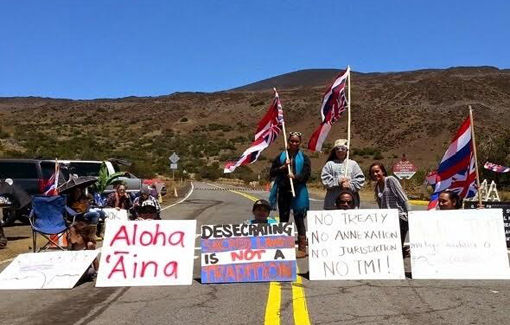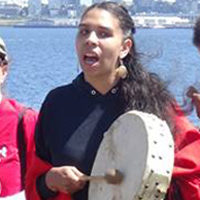
“Fighting with Spirit: How Greasy Grass was Won”, By Ruth Hopkins
On June 25, 1876, while camped at a place called Greasy Grass along the Little Bighorn River, Lakota Chief Sitting Bull’s village was attacked by the 7th Cavalry, led by Lieutenant Colonel George Armstrong Custer.
Now counts vary, but it’s estimated that Sitting Bull’s camp was some 8,000 strong that day. U.S. forces were greatly outnumbered. Besides Lakota, Sitting Bull was joined by Dakota, Cheyenne and Arapaho — and not just men. There were Lakota and Cheyenne women who fought too, and they were every bit as brave and fierce as their male counterparts. Make no mistake though — it was the 7th Cavalry that attacked the Lakota, despite the fact that there were elders and families with children camped there too. My namesake, a Dakota girl called Cankudutawin, (Red Road Woman) was one of them.
Read more at: http://lastrealindians.com/fighting-with-spirit-how-greasy-grass-was-won-by-ruth-hopkins/
“Two Spirit: The Trials and Tribulations of Gender Identity in the 21st Century”
Devin Etcitty, a 21-year-old from the Navajo nation, stood before a circle of 12 Native American students at Columbia University. He asked them to introduce themselves by name, tribal nation and preferred gender pronoun.
“She, her, hers,” said one. “But any are welcome.”
“I like the gender non-conformity,” said Etcitty.
Gender identity is a common topic on college campuses these days. But this group’s focus was unusual: how to cope as a Native American gay living off the reservation.
Read more at: http://indiancountrytodaymedianetwork.com/2015/01/13/two-spirit-trials-and-tribulations-gender-identity-21st-century-158686
Alaska Native knowledge merges with modern research to help study Arctic
FAIRBANKS, Alaska – My mother had so much to tell us about the taiga forest that she took my brothers and me into the woods during the summer when we were children. “Chew this,” she’d say, handing us hard chunks of spruce sap. “It’s gum.” Or, “don’t pick all the flowers,” she’d say. “Don’t pick all the berries. Save some for others and for them to come back next year.”
Mom was Alaska Native, and it was her job to tell us about the land. Because of this, we knew about which plants were good to eat or had good berries. One thing eluded her, though. She was always trying to make a willow flute just like her father made her when she was a girl. She never could figure it out.
Newstead, NY Replaces Columbus Day with Indigenous Peoples’ Day
“Your heroes are not our heroes, as indigenous people, why would we recognize a person of his stature? Acknowledging the native people versus what he did is much more significant.” ~Al Parker Seneca
On May 26 the Newstead Town Council unanimously voted to replace Columbus Day with Indigenous Peoples’ Day. Newstead, a small rural town located in the northeast corner of Erie County, which includes portions of the Tonawanda Indian Reservation, is the first in the region to designate the second Monday in October as Indigenous Peoples’ Day.
“The purpose is to celebrate and honor natives,” said Newstead Councilman Justin Rooney.
Read More At: http://lastrealindians.com/newstead-ny-replaces-columbus-day-with-indigenous-peoples-day/
How a Hawaiian mountaintop became a battleground between native activists and astronomers
The million-year-old mountain Mauna Kea rises broad-shouldered and statuesque out of the crystalline waves of the Pacific. Lush forests blanket its base, while sparse clouds buffet its rocky, windswept upper slopes, so high they are often gilded with snow even in balmy Hawaii. A long-dormant volcano formed by magma oozing up from the Earth’s interior, Mauna Kea looms nearly 14,000 feet above the surface of the ocean and more than six miles above the sea floor, making it the world’s tallest mountain from base to peak.

MOST POPULAR TODAY

Zionist organizations leading campaign to stop ceasefire resolutions in D.C. area


High Court essentially bans demonstrations, freedom of assembly in Deep South

Afghanistan’s socialist years: The promising future killed off by U.S. imperialism

Communist Karol Cariola elected president of Chile’s legislature






Comments